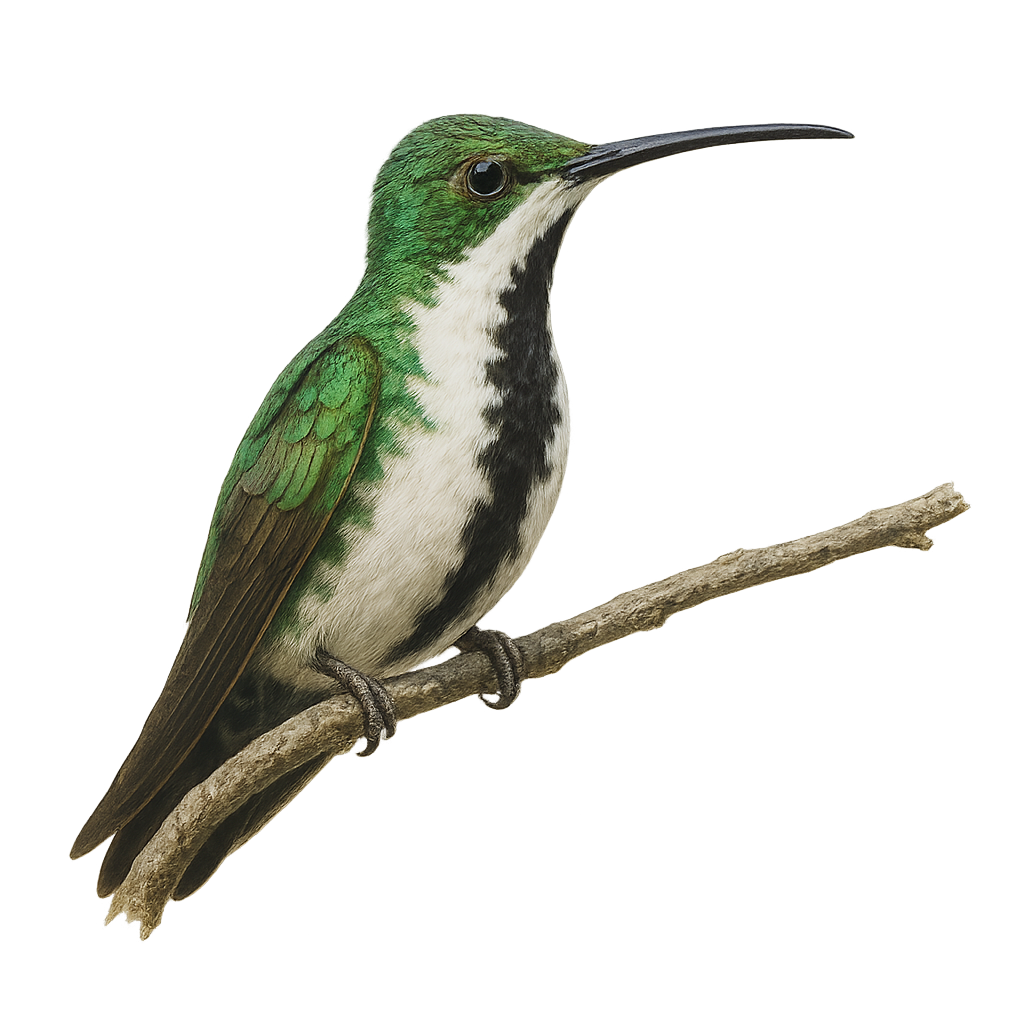Your wildlife photography guide.
Explore the black-throated mango in detail, study its behavior, prepare your shots.
Where to observe and photograph the black-throated mango in the wild
Learn where and when to spot the black-throated mango in the wild, how to identify the species based on distinctive features, and what natural environments it inhabits. The WildlifePhotographer app offers tailored photography tips that reflect the black-throated mango’s behavior, helping you capture better wildlife images. Explore the full species profile for key information including description, habitat, active periods, and approach techniques.
Black-throated Mango
Scientific name: Anthracothorax nigricollis

IUCN Status: Least Concern
Family: TROCHILIDAE
Group: Birds
Sensitivity to human approach: Suspicious
Minimum approach distance: 5 m
Courtship display: October to December
Incubation: 16-18 jours
Hatchings: October to January
Habitat:
tropical forests, urban gardens, forest edges
Activity period :
Primarily active during the day, with peak activity in the morning and late afternoon.
Identification and description:
The Black-throated Mango is a medium-sized hummingbird, easily recognizable by its black throat and metallic green plumage. Males have a distinctive black stripe running from the throat to the abdomen, while females feature a central white stripe bordered by black. It is primarily found in South America, inhabiting a range of environments from tropical forests to urban gardens. This hummingbird is an important pollinator, feeding mainly on nectar, but also consumes small insects to supplement its diet. Its rapid flight and agile movements make it a fascinating sight to behold.
Recommended lens:
400 mm – adjust based on distance, desired framing (portrait or habitat), and approach conditions.
Photography tips:
To photograph the Black-throated Mango, it is advisable to use a 400mm lens or longer to capture precise details without disturbing the bird. Look for areas where flowers are abundant, as these hummingbirds are attracted to nectar. Be patient and wait for them to perch while feeding. Use a fast shutter speed to freeze their rapid flight and adjust the aperture for good depth of field. Natural morning or afternoon light is ideal to highlight the metallic colors of their plumage.
The WildlifePhotographer App is coming soon!
Be the first to explore the best nature spots, track rutting seasons, log your observations, and observe more wildlife.
Already 1 439 wildlife lovers subscribed worldwide

